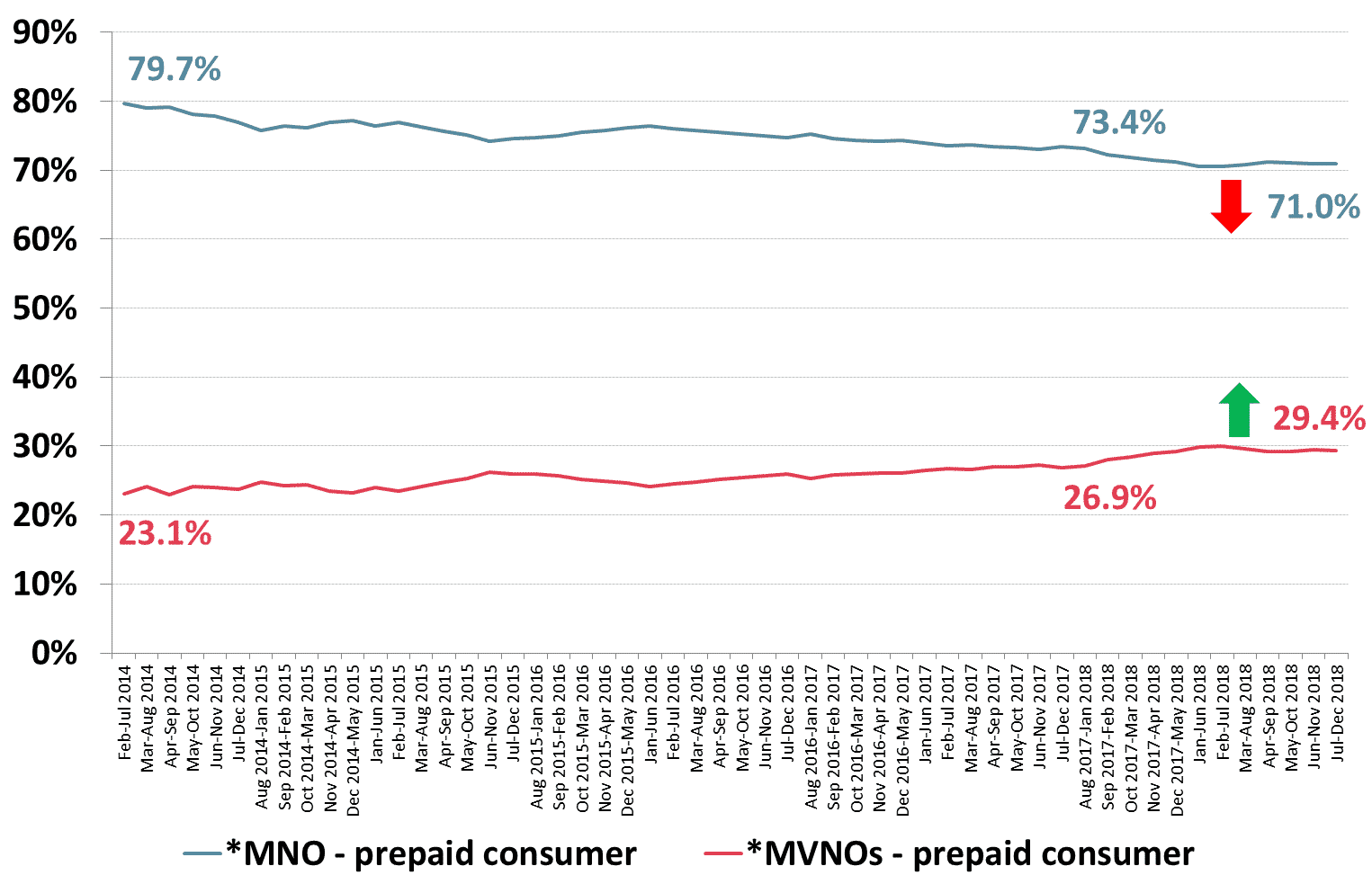COVID-19 reduces telcos’ SIO
The major telcos have taken a major hit from COVID-19. According to Telsyte’s latest Australian mobile services market study, the number of SIO (Services in Operation) declined by 62,000 from January to June, given the decline of international visitors and foreign students caused by COVID-19 restrictions. This is in stark to the past 10 years, which saw consistent SIO growth.
While Mobile Virtual Network Operators like Amaysim actually recorded gains in SIO, the major telcos took the brunt of the losses. Optus and Vodafone (TPG Telecom) were hit the hardest, and that seems to have contributed in their recent expansion into the MVNO market.
Vodafone announced the launch of their MVNO, Felix Mobile, back in October, while Optus announced their purchase of Amaysim earlier this month, along with the launch of Gomo, their own MVNO.
The recent moves by Vodafone and Optus don’t only place them squarely in the MVNO market, but also serve to compete with Telstra’s Belong, which has accounted for the vast majority of that telco’s new subscribers this year.
In this article, we take a look at how attractive the MVNO market is to both telcos and consumers, especially in the current COVID-19 climate. We’ll also look into what we know so far about Vodafone’s and Optus’ new MVNOs.
Despite COVID-19, MVNO market remains strong
MVNOs have shown huge growth over the years. According to Roy Morgan, these smaller telcos grew by almost 30 percent between 2014 and 2018, while the larger telcos saw their market share shring by over 70 percent during that same period.
MVNO sector has continued to grow over the years. src
Amaysim is the largest MVNO in Australia, recording 1.9 million subscribers while the major telcos see declines in SIO. Other popular MVNO brands include Boost Mobile, OVO, and others.
MVNOs are smaller telcos that purchase the major telco wholesale networks and resell to consumers. Their lineups are typically very straightforward and affordable, given their smaller overhead when compared to major telcos.
Consumers are attracted to MVNOs for their cheap mobile plans, and that has come in especially handy during the COVID-19 pandemic.
With the Australian government taking lockdown measures, as well as other restrictions to stem the spread of the coronavirus, the economy has experienced a setback. Australians are not confident that the economy will get better anytime soon, so the majority plan to spend less over the next 12 months, making MVNOs even more attractive these days. In fact, MVNOs accounted for 16 percent of the total SIO at the end of FY2020.
Major telcos want a piece of the MVNO pie
The MVNO model is attracting Australia’s major telcos. While MVNOs recorded growth, the major telcos recorded declines in SIO during the months COVID-19 was at its peak.
Meanwhile, Belong, Telstra’s MVNO, accounted for 64 percent of Telstra’s new postpaid mobile subscribers this year, and 100 percent of Telstra’s new broadband subscribers, all while Telstra itself recorded losses.
Optus and Vodafone (TPG Telecom) want a piece of what Telstra has found in Belong. To compete, both of those telcos have announced their own MVNOs, and Optus has also announced the purchase of Amaysim, the largest MVNO in Australia.
This is understandable, considering Optus and Vodafone have taken the biggest portions of the 62,000 SIO decline during the peak of COVID-19. Both telcos are desperate for was to grow.
Optus and Vodafone MVNOs – Amaysim, Gomo, and Felix Mobile
Optus has purchased Amaysim for $250m. This is a huge deal, considering Amaysim is the largest MVNO in the market. To put this into perspective, Amaysim’s 1.9 million subscribers could now be classified as Optus subscribers, a much needed boost for the major telco’s SIO.
Optus also announced the launch of Gomo. There is not much information about the upcoming small mobile service yet, but we know it will be fully digital – no stores, just an app where you can purchase a plan and seek customer support. This is another page from Telstra’s Belong book, which announced a couple of months ago that they were going fully digital.
Vodafone has also followed the same Belong playbook. That telco announced the launch of Felix Mobile, their own fully digital smaller mobile service provider to compete with Belong and the MVNO market. There isn’t much information about Felix Mobile yet, but we expect its launch towards the end of the year.
Final words
COVID-19 has disrupted the telco industry in Australia, a sparse reversal from the past decade which saw consistent growth in SIO. With the decline of people traveling into the country, as well as foreign students, telcos have seen a decline in services in operation (or mobile lines being used by subscribers).
MVNOs have gained, on the other hand, as Australians find their cheaper plans attractive. As a result, the major telcos have began stepping into the MVNO market with smaller mobile service providers of their own.
It will be interesting to see how these major-telco-owned-MVNOs that are about to launch will affect the MVNO market. Will it reduce competition or increase it?
Either way, telcos clearly find the cheaper market attractive because of how attractive consumers find it. For that reason, you can expect even more competitive, affordable mobile plans as these telcos battle it out for market share.
